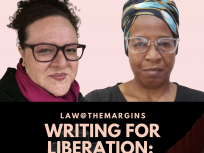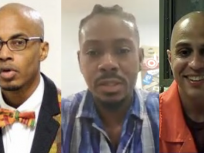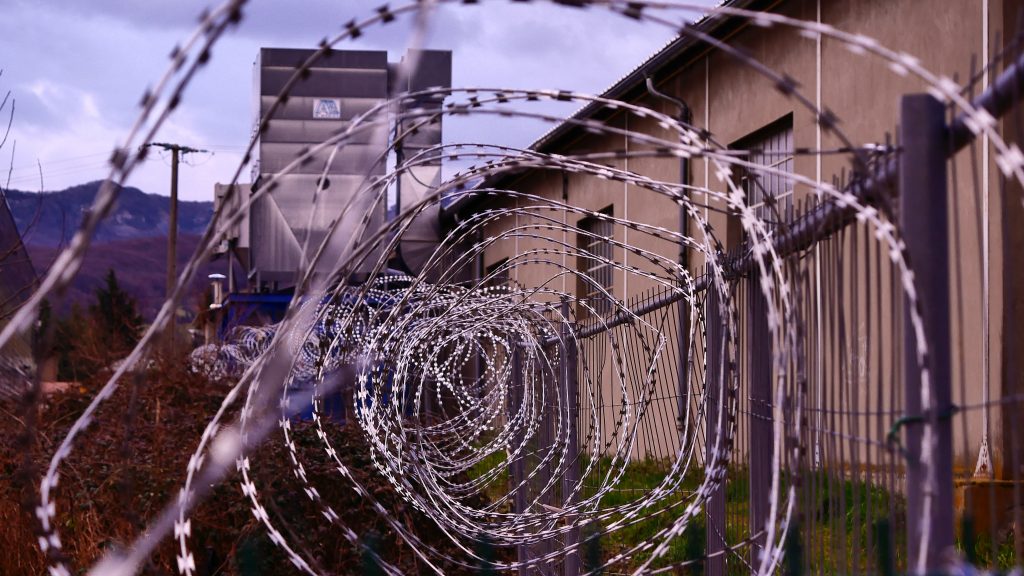
This pandemic has become a death sentence for the incarcerated population, and no one in our government seems to care.
By Shandre Delaney
Editor’s note: Shandre Delaney is a prison abolitionist and Community Based News Room contributor. Her son, Carrington Keys, was released from prison on May 15, 2018, after serving 20 years. He spent 10 of those years in solitary confinement. Since then, Delaney has become a vocal advocate for her son and all prisoners.
When COVID-19 began to ravage the United States in February, the incarcerated population was hit just as hard as everyone else. In some prisons and jails, it was even worse. Now as states open back up, and the number of cases continues to rise, this pandemic may become a death sentence for many more prisoners.
The American criminal justice system holds 2.3 million prisoners, and there have been over 46,000 cases of COVID-19 infections in federal and state prisons with 548 prisoner deaths, according to the Marshall Project. All over the country, people have been demanding the release of prisoners, especially those with chronic illnesses and the elderly. Some prisoners
have been released: over 29,000 from federal and state prisons and over 59,000 from local jails (reports UCLA Law) and over 700 from immigrant detention centers (according to Immigration and Customs Enforcement). It’s not nearly enough. Prisoners still are losing their lives, and no one in our government seems to care. Once again, vulnerable people are being overlooked.
In Prisoners’ Words: ‘We Sittin’ Ducks’
It’s very important that the prisoner’s voice is heard at all times, especially right now. It has become common to hear about the deaths of prisoners who are eligible for release but didn’t make it home. As an advocate, I receive tons of mail exposing the truth of what’s going on inside the walls. A well-known issue in many prisons is the lack of airflow. The staff often come in with huge fans to blow the air about, especially after they have used teargas. Many prisoners have told me about the lack of air circulation. When one person gets sick in a unit or pod in general, everyone gets sick. It’s because of poor air circulation. And this was before COVID-19.
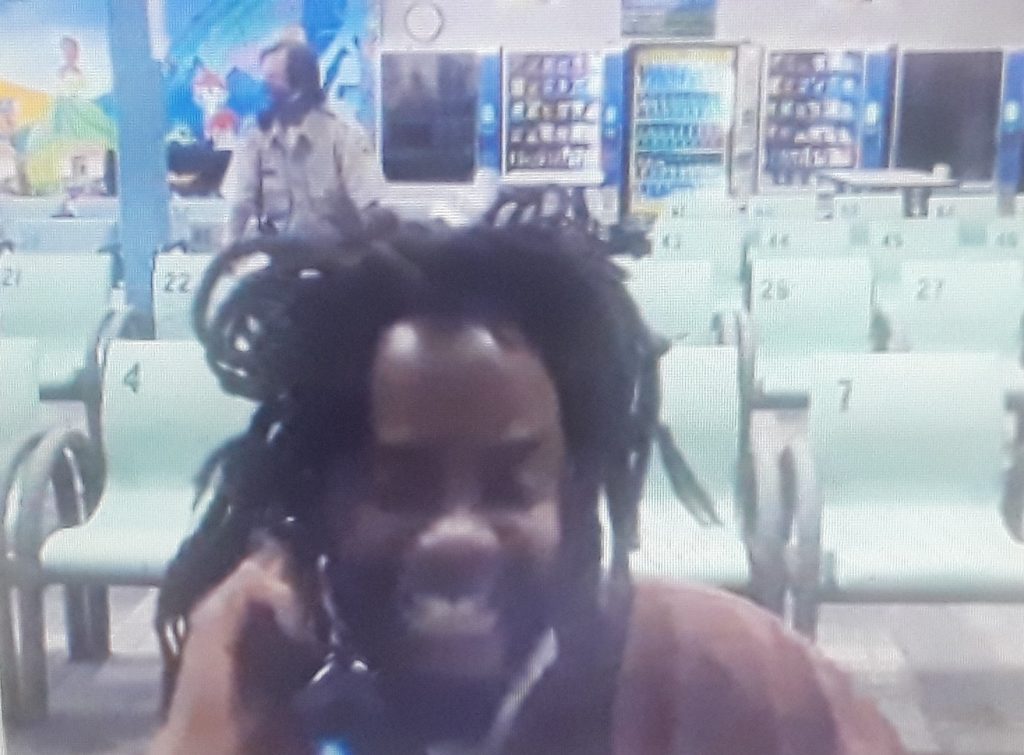
I received an email on June 6 from a prisoner who had those same concerns. Thomas Woods at SCI Huntingdon, a COVID-19 hotspot in Pennsylvania, wrote, “The prison is on semi quarantine due to the COVID-19, and dudes in here are dying from it as the cells don’t have any kind of ventilation or exhaust systems. We have no means of fresh air as we also have no cell windows. We sittin’ ducks in a time bomb ready to explode with the COVID-19.”
In Pennsylvania jails, prisons, immigration detention centers, visits were shut down at all facilities in March and replaced with Zoom video visits. Some prisons are not maintaining a clean area as described in an email I received from Muti A. Ajamu-Osgaboro. “In the beginning of the pandemic, paper towels and a bleach water spray bottle were placed at the video visit booth,” he wrote, “but the paper towels were later replaced with napkins and then finally a wet rag that everyone had to share.”
He describes later waking up in fear and breaking out in a sweat after recalling he had used the rag. So far, he is coronavirus-free, but you only get tested if you have symptoms, and sometimes not even then. It’s a constant fear for many prisoners because of the lack of concern for their safety and well-being at correctional facilities. When he asked why the prison didn’t restock the paper towels, prison staff told him it was because the prison didn’t want to spend any more money on paper towels.
COVID-19 Impact on Prisoners
From the beginning of the pandemic, advocates for the incarcerated and health officials have warned of higher risks for people in jails, prisons and immigrant detention centers. Beyond those with pre-existing conditions and chronic illnesses, a number of factors put incarcerated people at higher risk for COVID-19. There is no social distancing in the close confines of prison and jail cells and facilities. There is not adequate access to soap and water at any correctional facilities.
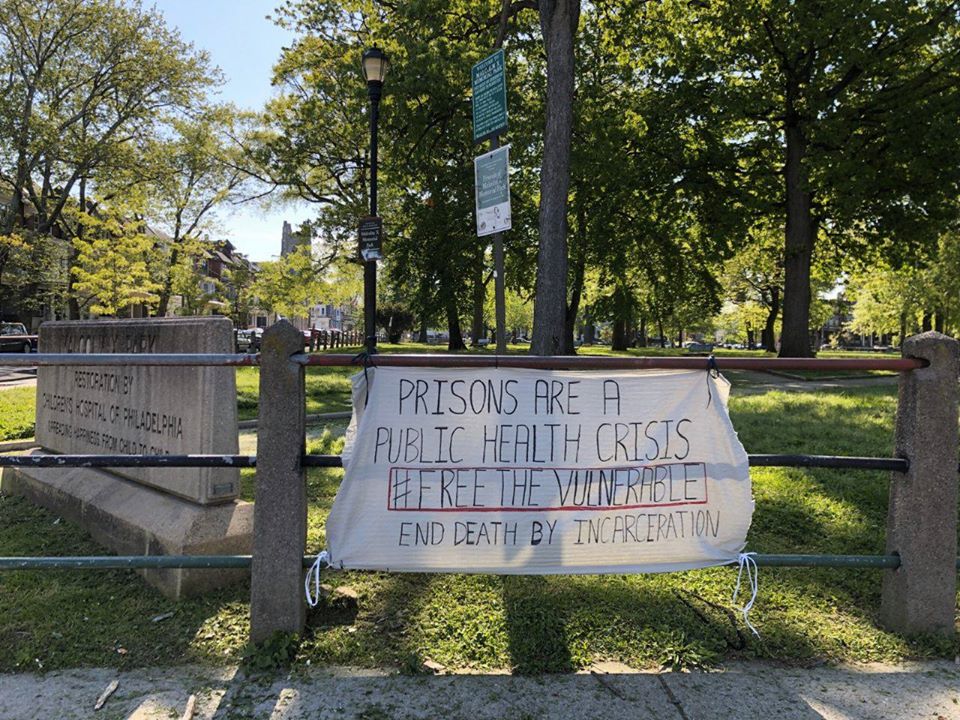
Now that a second wave of the pandemic is hitting, substantiated by data, we know what the outcome will be for prisoners: more deaths. The hotspot in Pennsylvania is SCI Huntingdon, a prison built in 1888 where cells with bars open into four-story corridors. Because guards have to manually open each cell with a key, it is impossible to avoid contact. So far, 169 prisoners and 54 staff have tested positive, and five have died. This map highlights overall cases in jails and prisons in Pennsylvania. The numbers are low compared to Texas (7,000 total cases) and federal prisons (over 6,400 cases with 87 prisoner deaths and one staff death), which are close in the number of cases.
As on the outside, tests and personal protective equipment (PPE) are limited at all correctional facilities. Their go-to safety measure is taking the temperature of correction officers reporting for work in order to prevent them from bringing in the virus from the outside, but temperature screening will not catch asymptomatic carriers of the virus. While prison authorities claim to be sanitizing facilities, it is near to impossible to stop the spread of a virus like COVID-19 in prisons. It is also important to remember the disparities and that the prison population is largely black and brown, two groups of people who have been reported to be at a higher risk for COVID-19.
Taking Action on the Inside and Outside
Throughout the pandemic, there have been prisoner-led actions on the inside. The most recent report was from an immigrant detention center in Puente, Arizona, where they began a hunger strike on May 20. A video call with a Guatemalan refugee at the detention center reveals torture, starvation and abuse. The detainee on the call describes being fed only a cookie and juice for lunch, with people being thrown into the hole for being sick or for making complaints. Once they are in the hole, the air is turned up, and their jackets are taken. He said they could no longer take it, so 14 people went on a hunger strike and vowed to stay on it until they are set free or taken out in a box. (Please sign the petition demanding their release.)
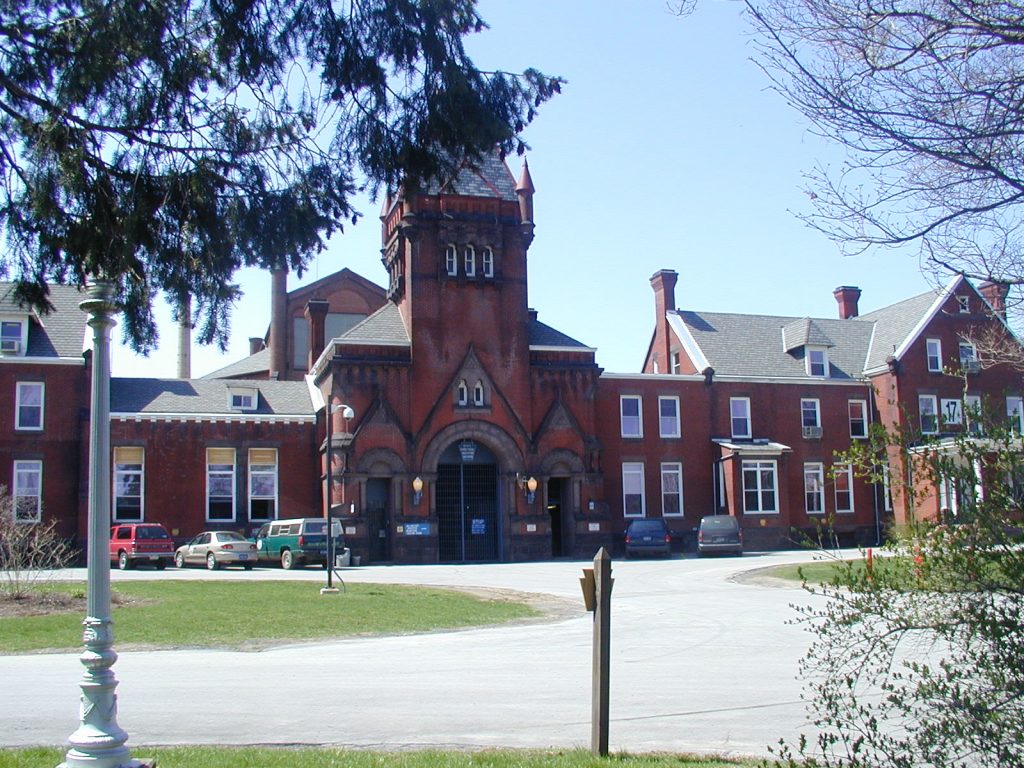
COVID-19 prisoner-led actions by state are reported on Perilous Chronicle, a website that chronicles prisoner unrest from 2010 to the present. They also provide a map that details areas of the country where actions are taking place.
On the outside are more campaigns to release prisoners. All over the country, organizations have been fighting for prisoners’ freedom. Most state governors have the power to grant reprieves but are not using it. It seems as if the governors are not giving this a priority or moving slowly in a time of urgency. As strong advocates, we do not think of backing down. We ramp it up.
In Pennsylvania, we formed statewide coalitions — Free The Vulnerable Campaign and Free People Strike — to continue pushing for release. We began with a statewide town hall to discuss COVID-19 and its impact on prisoners. Then, we held a statewide Banner Drop. People made signs and hung them in windows and porches of homes, at state representatives’ offices or in very visible places in our communities. Then, we took pictures and posted them on social media (Twitter and Facebook) tagging the governor and other officials.
Right now, approximately 12 people with the Human Rights Coalition and Free People Strike (including activists and family members) are participating in a hunger strike in Philadelphia. They make daily video updates.
Wesley Hackman, a white activist, has been on a hunger strike for over nine days. In a video of his hunger strike after Day 3, he declared, “I continue to think about how I can give as much as I can, my body and mind, to the fight that black and brown people and other people of color are fighting for the respect, dignity and liberation they are owed.”
He also is doing the more challenging work of looking inward to identify how he reinforces white supremacy with his actions and thoughts, and how that can cause harm to others. This internal reflection is challenging, he admits, but the police/prison state will not be abolished until white folks dismantle the unconscious bias inside them (an internalized police state) as well.
Karen Ali explained in a video how she has been fighting to free her husband, Omar Askia Ali, for the last 49 years for a crime that he did not commit.
The #FreePeopleStrike hunger strikers are getting more media attention, including a June 24 appearance on New York’s WBAI radio program “It’s A Good Day” with Johanna Fernandez, as they do all they can to raise awareness and help get incarcerated people released.
In Phoenix, Arizona, the grassroots migrant justice organization Puente Human Rights Movement released the audio of the Guatemalan refugee. Their mission is to develop, educate and empower migrant communities to protect and defend their families and themselves. They have an ongoing petition to free those in ICE detention centers in Arizona.
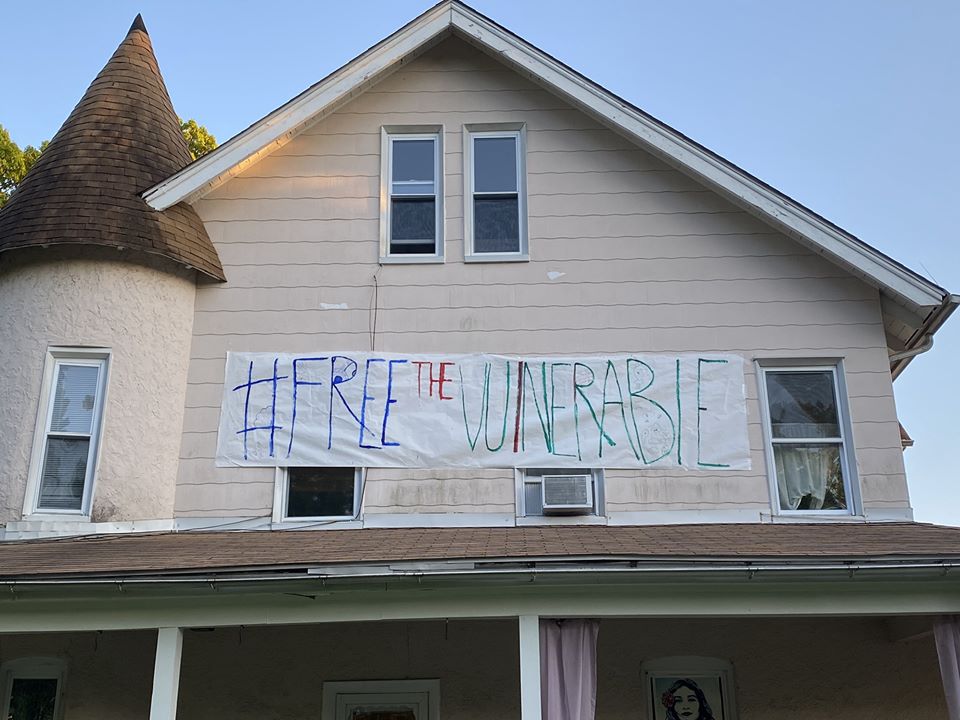
Another organization, We Got Us Now was created and is run by the children of prisoners. It is the first of its kind. I watched CEO and founder Ebony Underwood in a virtual town hall held by U.S. Rep. Ayanna Pressley from Massachusetts, and I was impressed. This organization has been amplifying the issues children and young adults with incarcerated parents face due to mass incarceration. When the pandemic began, they issued an open letter and petition to the Federal Bureau of Prisons, governors, State Departments of Corrections and Public Safety, local jails, detention centers, city officials, telecommunications companies and the media.
They use the hashtag #ProtectOurParents and have four demands: (1) immediate clemency for elderly and sickly parents in prison, (2) free communications for phone, email and postage mail, (3) free mobile notification system with real-time updates about lockdowns and prison closures to reduce children and family stress and trauma and (4) improving sanitary conditions by providing free medical care and free soap, hand sanitizer and hygiene products to protect inmates and keep them safe.
These are just a few of the ongoing COVID-19 decarceration efforts. For a detailed list of ongoing actions by state, go to the Prison Health News website.
Conditions for Release
From state to state, the conditions are similar, and our demands are basically the same. The most common asks are for the most vulnerable to be released. The same goes for those with technical violations and those past their minimum sentence. We want the parole board to stop denying people early release and to consider releasing even violent offenders on a case-by-case basis. If a violent offender is 70 or 80 years old and has done 30 or 40 years, they are not a threat to anyone. They should be released. The Pennsylvania Department of Corrections has criteria for early release to better manage COVID-19 and considers people over 55 to be elderly so that would increase the number of people to be released.
All governors have reprieve powers and should be using them. We are asking for more commutations and compassionate release. There are people with chronic illnesses, the most vulnerable, who are not a threat. These people should be at home with family to begin with, and now during a pandemic makes being released a greater need. Under the criteria that was proposed initially in Pennsylvania, 1,800 people should have been eligible, but only 146 people were released, and those were people who had made parole but were released earlier.
I contacted the Pennsylvania Department of Corrections media relations to find out about their intent on releasing more people beyond the 146, and the only answer I could get was to refer me to the states COVID website. Nothing has changed. Will it? Other states seem to be following the trend. Likewise, the federal system has slowed down on its promised releases.
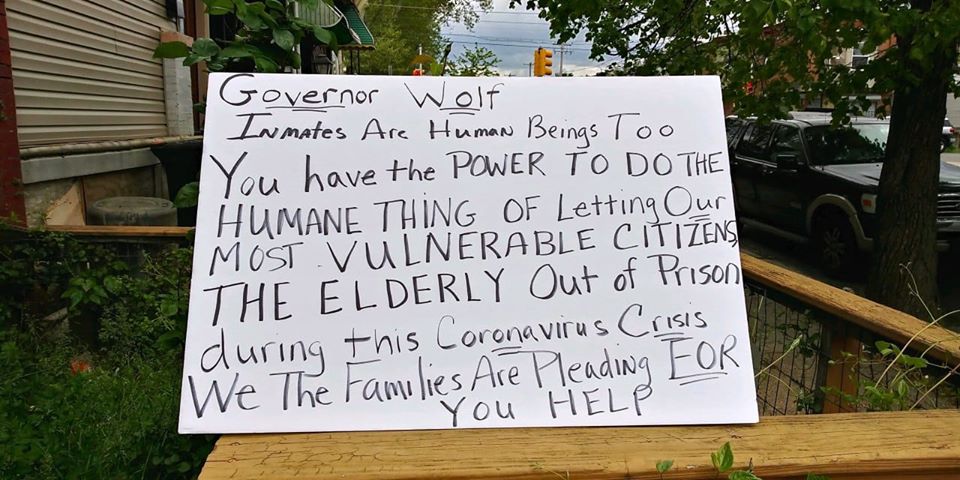
At the beginning, federal and state authorities were responsive and released people, but as the pandemic has persisted, they have clamped down on keeping the prison population intact everywhere. In some cases, it seems, politics determine who gets released and who doesn’t. It was disheartening to watch Paul Manafort and Michael Cohen walk out of prison. Especially when I heard that the Bureau of Prisons threw a sickly 80-year-old man in solitary because he was complaining about being denied compassionate release. Yet these two healthy men walk out under cameras and fanfare. It made me think of all the elderly and vulnerable people who could die. Are their lives not important?
Lifting Up Their Names
These are some of the most egregious losses. They shine a spotlight on the inhumanity and uncaring actions of our society and prisons. They show an urgent need for releases.
Andrea Circle Bear gave birth while unconscious. She was the first female federal prisoner to succumb to the virus. She had been transferred across the country while sick and pregnant. During this transfer, she was left to stand on a cold airport tarmac.
William Garrison was a juvenile lifer who had served 44 years. He was weeks away from going home when his life was ended by COVID-19.
Carlos Ernesto Escobar Mejia was at a privately owned ICE detention facility where those with symptoms were thrown in together and just left. They were living off of crackers and bologna sandwiches and only ibuprofen for treatment.
Tiffany Mofield was quarantined in a shower where she passed after begging for help from her symptoms.
View the tributes to prisoners who lost their life to COVID-19 or submit a memorial.
Throughout my years as an advocate, I have learned about the disregard for life. But not stopping that behavior during a pandemic is criminal. More prisoners should be released, or they are all at risk. They are human beings, and society forgets that. They have families. They are loved and have goals and dreams like the rest of us.
Our criminal justice system needs to be changed. This system is working just like it’s supposed to — oppressing black, brown, and poor people, and the vulnerable of our society. Continued failure to act by the state will cause countless more deaths.
Community Based News Room publishes the stories of people impacted by injustice and aspiring for change. Do you have a story to tell? Please contact us at CBNR. To support our Community Based News Room, please donate here.


